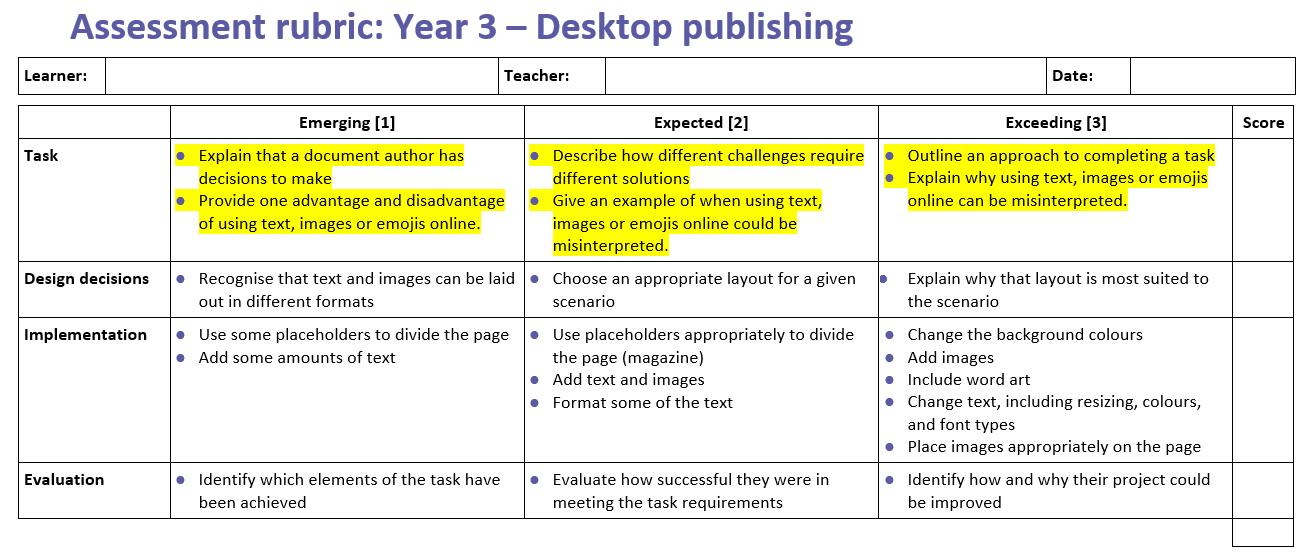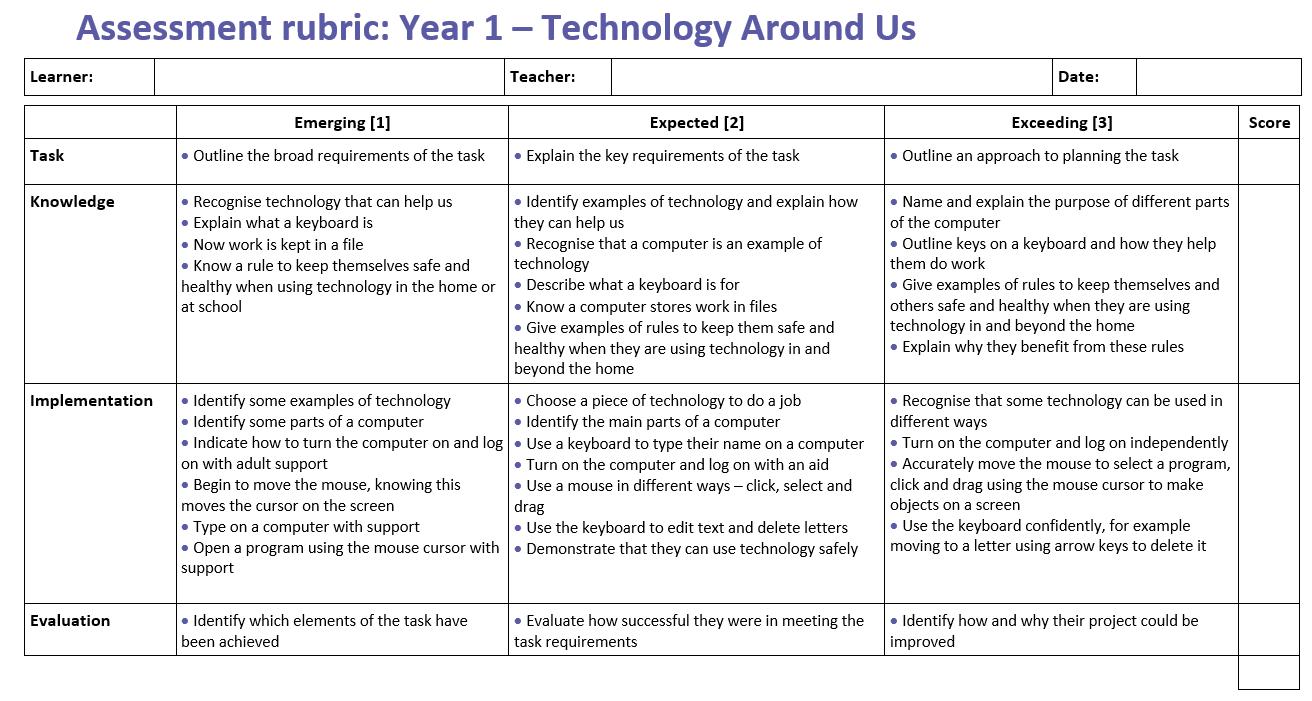

Computing
Curriculum Map Document
1. Computing Statement of Intent
2. Computing at GM – an overview
3. Whole School Long Term Plan
4. Progression of Skills
5. Assessment
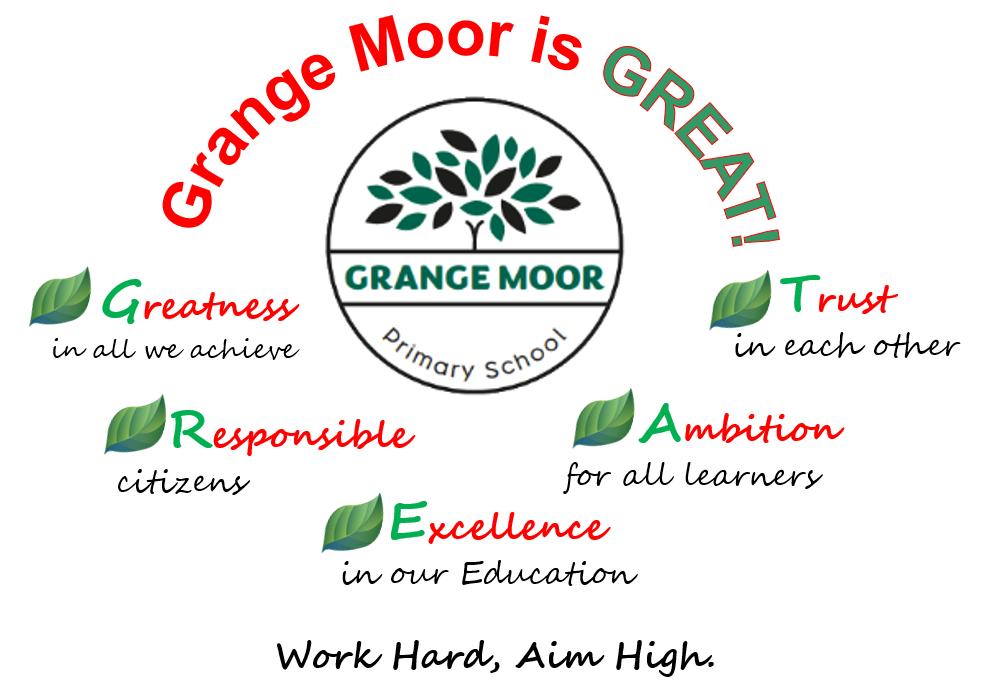
1. Statement of Intent
As set out in Section 3 of the National Curriculum, a high quality computing curriculum:
‘equips pupils to use computational thinking and creativity to understand and change the world. Computing has deep links with mathematics, science, and design and technology, and provides insights into both natural and artificial systems. The core of computing is computer science, in which pupils are taught the principles of information and computation, how digital systems work, and how to put this knowledge to use through programming. Building on this knowledge and understanding, pupils are equipped to use information technology to create programs, systems and a range of content. Computing also ensures that pupils become digitally literate – able to use, and express themselves and develop their ideas through, information and communication technology – at a level suitable for the future workplace and as active participants in a digital world’.
Computer Science
How computer and computer systems work and how they are designed and programmed
Foundations
Information Technology
Looking at technology in our lives and the purposeful use of existing programmes to develop products and solutions
Applications
Digital Literacy
The skills knowledge and understanding needed in order to participate fully and safely in an increasingly digital world
Implications
At Grange Moor Primary School, we aim to provide a consistent and comprehensive computing curriculum that provides children with the knowledge and skills they need in the areas above. Wrapped around this is a culture of being a safe computer and internet user and contributing to the world of technology positively.
2. Computing at Grange Moor an Overview
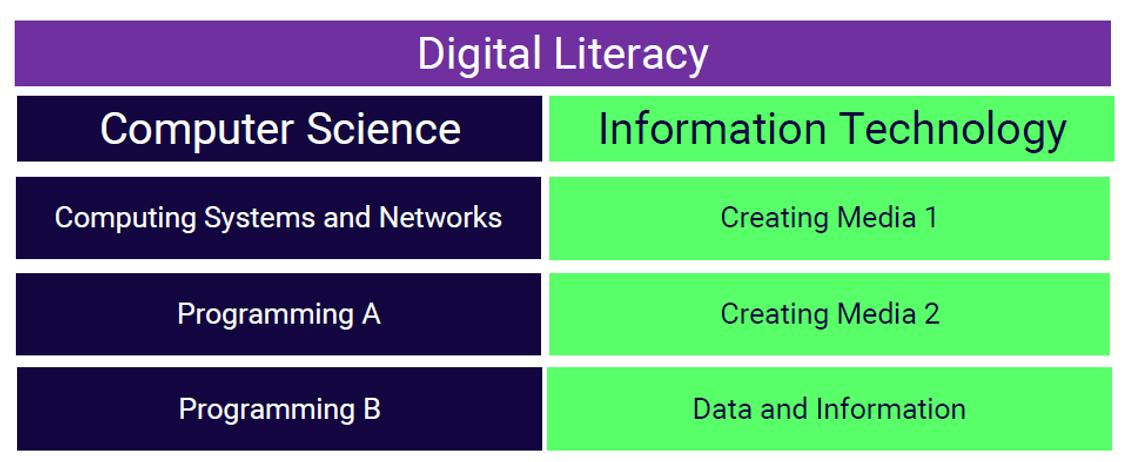

Dedicated Computing lessons are taught weekly to all year groups using Teach Computing. This is planned on a two year cycle to meet the needs of our mixed aged planning but with the 6 units spread over 2 years to allow for progression and deeper learning in each area before moving on.
The units for key stages 1 and 2 are based on a spiral curriculum. This means that each of the themes is revisited regularly (at least once in each year group), and pupils revisit each theme through a new unit that consolidates and builds on prior learning within that theme. This style of curriculum design reduces the amount of knowledge lost through forgetting, as topics are revisited yearly. It also ensures that connections are made.
In addition to the computing knowledge and skills taught we also use Project Evolve to ensure children are equipped to stay safe in a digital world.
Every Computing lesson begins with a whole class starter session around e-safety using the long term plan over the page.


3. Whole School Long Term Plan
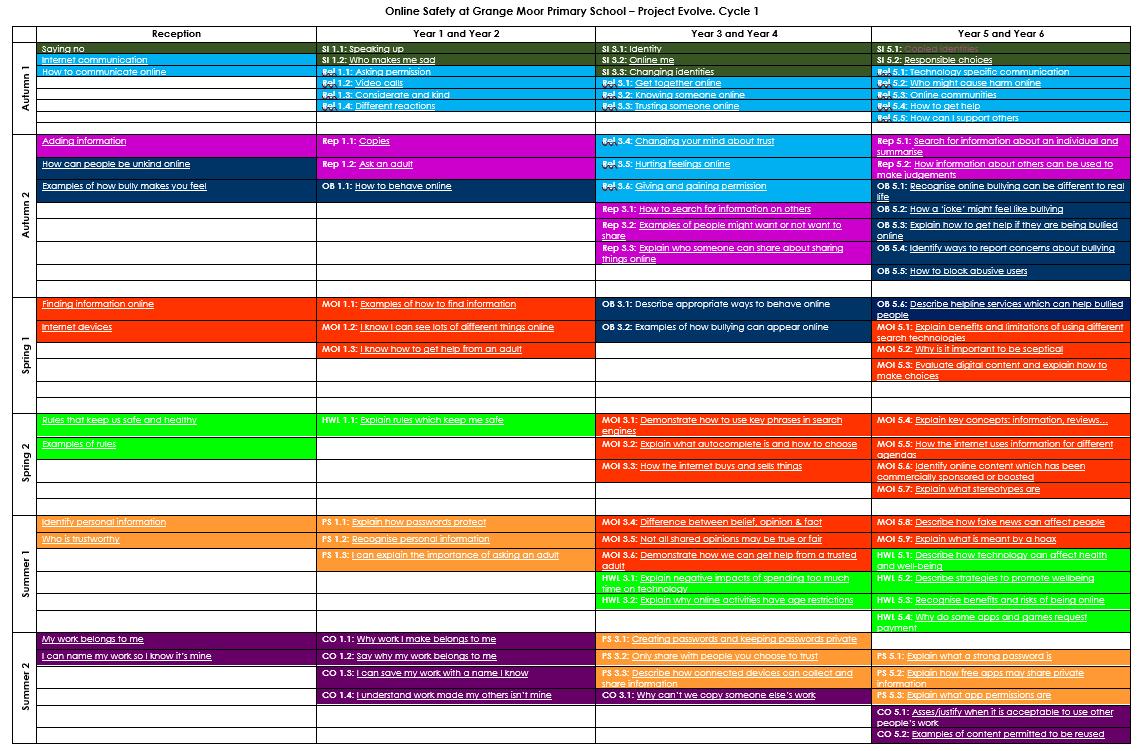
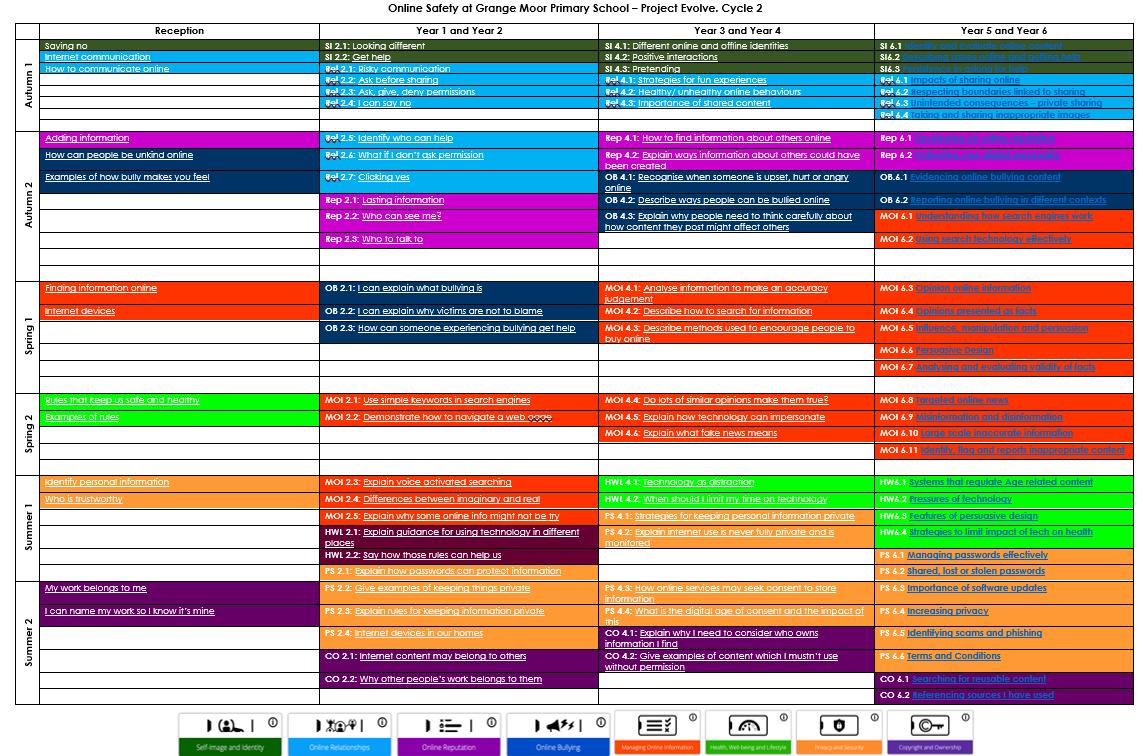
Whole School Long Term Plan – Teach Computing
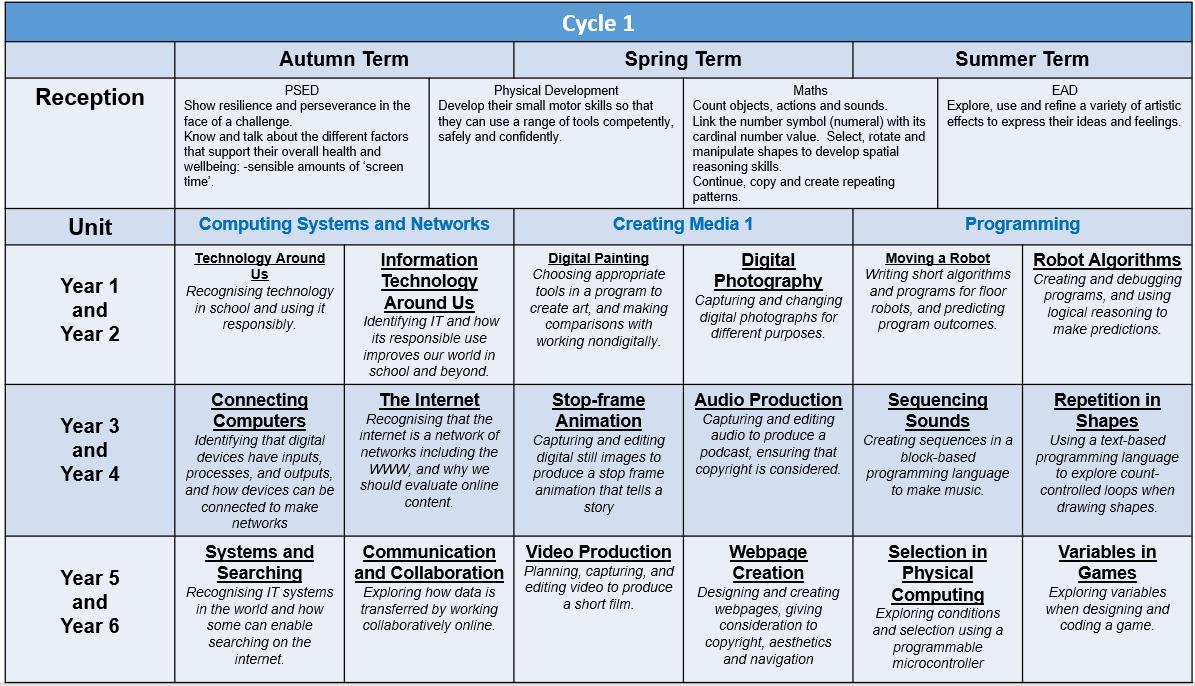
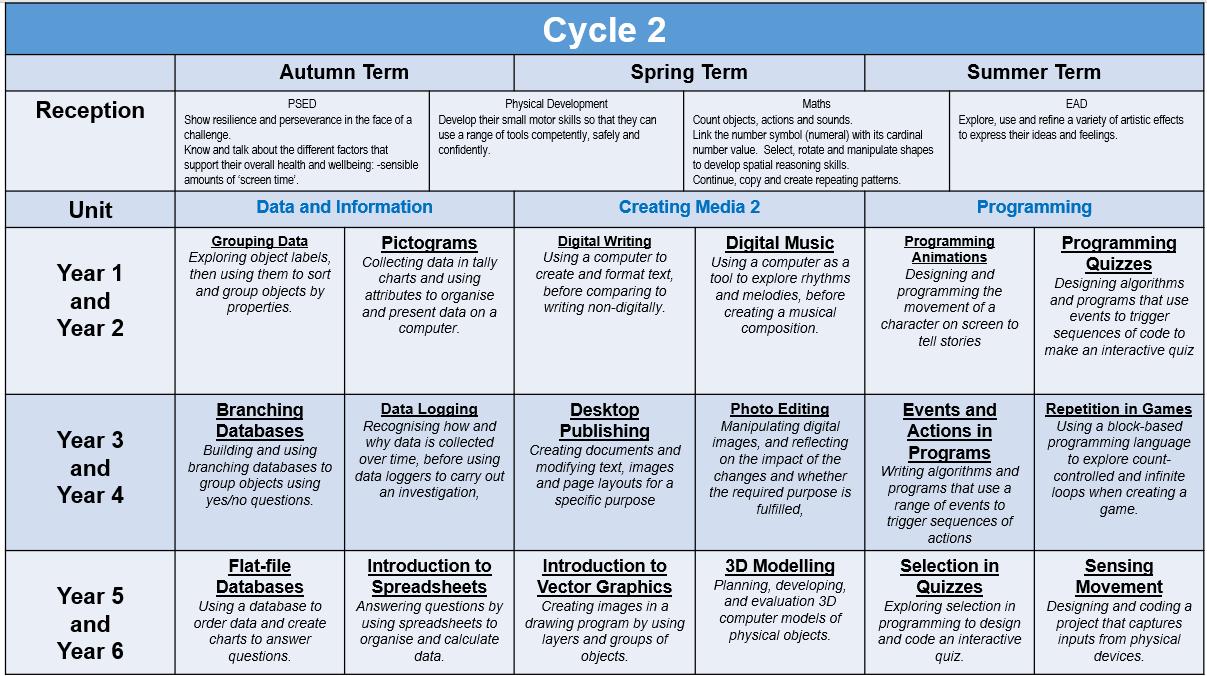
Progression of Skills
The units for key stages 1 and 2 are based on a spiral curriculum. This means that each of the themes is revisited regularly (at least once in each year group), and pupils revisit each theme through a new unit that consolidates and builds on prior learning within that theme. This style of curriculum design reduces the amount of knowledge lost through forgetting, as topics are revisited yearly. It also ensures that connections are made.
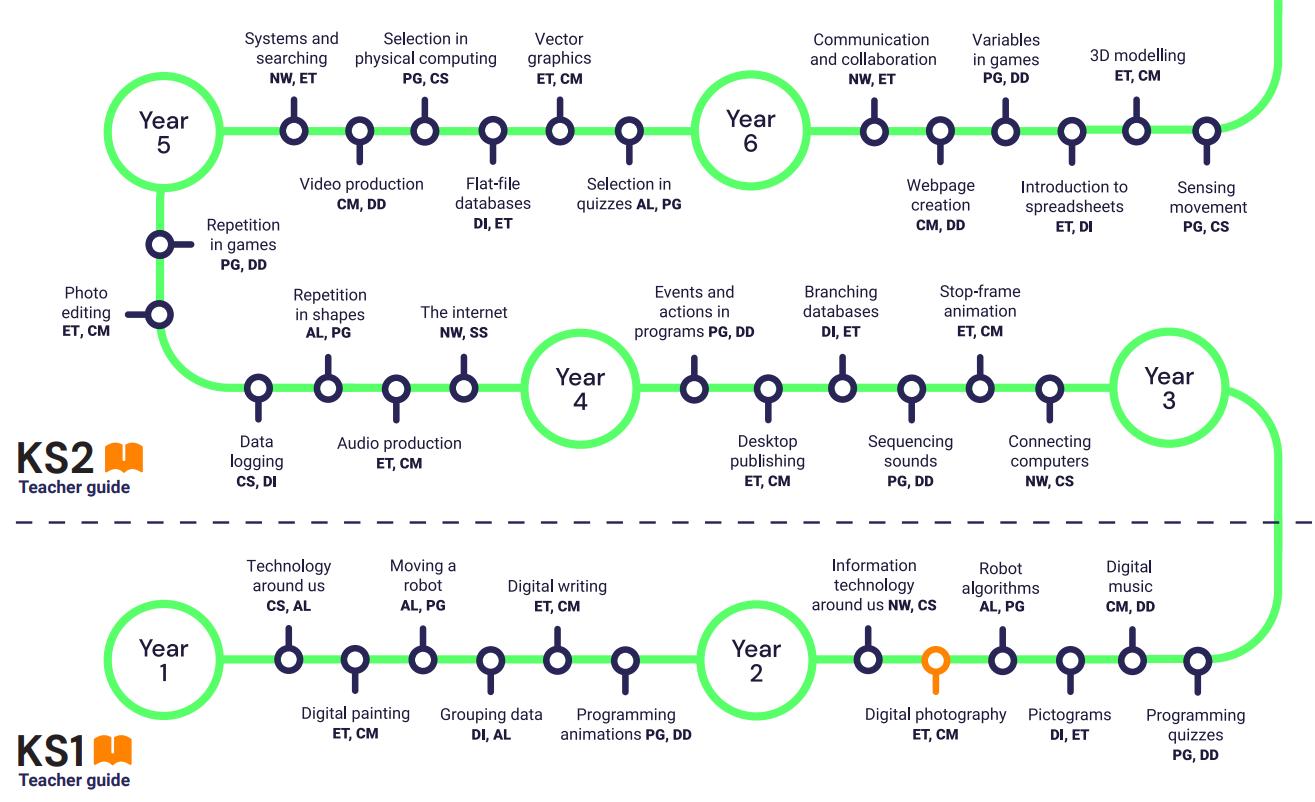
Computing: Progression of skills Y1
e-Safety Programming Handling Data
• I can keep my password private.
• I can tell you what personal information is.
• I can tell an adult when I see something unexpected or worrying online.
• I can talk about why it’s important to be kind and polite. I can recognise an age appropriate website.
• I can agree and follow sensible e-Safety rules.
• I can give instructions to my friend and follow their instructions to move around.
• I can describe what happens when I press buttons on a robot.
• I can press the buttons in the correct order to make my robot do what I want.
• I can describe what actions I will need to do to make something happen and begin to use the word algorithm.
• I can begin to predict what will happen for a short sequence of instructions.
• I can begin to use software/apps to create movement and patterns on a screen.
• I can use the word debug when I correct mistakes when I program.
• I can talk about the different ways in which information can be shown.
• I can use technology to collect information, including photos, video and sound.
• I can sort different kinds of information and present it to others.
• I can add information to a pictograph and talk to you about what I have found out.
Multimedia Technology in our lives
• I can be creative with different technology tools.
• I can use technology to create and present my ideas.
• I can use the keyboard or a word bank on my device to enter text.
• I can save information in a special place and retrieve it again.
• I can recognise the ways we use technology in our classroom.
• I can recognise ways that technology is used in my home and community.
• I can use links to websites to find information.
• I can begin to identify some of the benefits of using technology
Computing: Progression of skills Y2
e-Safety Programming Handling Data
Multimedia Technology in our lives
• I can explain why I need to keep my password and personal information private.
• I can describe the things that happen online that I must tell an adult about.
• I can talk about why I should go online for a short amount of time.
• I can talk about why it is important to be kind and polite online and in real life.
• I know that not everyone is who they say they are on the Internet.
• I can give instructions to my friend (using forward, backward and turn) and physically follow their instructions.
• I can tell you the order I need to do things to make something happen and talk about this as an algorithm.
• I can program a robot or software to do a particular task. I can look at my friend’s program and tell you what will happen.
• I can use programming software to make objects move.
• I can watch a program execute and spot where it goes wrong so that I can debug it.
• I talk about the different ways I use technology to collect information, including a camera, microscope or sound recorder.
• I can make and save a chart or graph using the data I collect.
• I can talk about the data that is shown in my chart or graph.
• I am starting to understand a branching database.
• I can tell you what kind of information I could use to help me investigate a question.
• I can use technology to organise and present my ideas in different ways.
• I can use the keyboard on my device to add, delete and space text for others to read.
• I can tell you about an online tool that will help me to share my ideas with other people.
• I can save and open files on the device I use.
• I can tell you why I use technology in the classroom.
• I can tell you why I use technology in my home and community. I am starting to understand that other people have created the information I use.
• I can identify benefits of using technology including finding information, creating and communicating
• I can talk about the differences between the Internet and things in the physical world.
Computing: Progression of skills Y3
e-Safety Programming Handling Data Multimedia Technology in our lives
• I can talk about what makes a secure password and why they are important.
• I can protect my personal information when I do different things online.
• I can use the safety features of websites as well as reporting concerns to an adult.
• I can recognise websites and games appropriate for my age.
• I can make good choices about how long I spend online.
• I ask an adult before downloading files and games from the Internet. I can post positive comments online
• I can break an open ended problem up into smaller parts.
• I can put programming commands into a sequence to achieve a specific outcome.
• I keep testing my program and can recognise when I need to debug it.
• I can use repeat commands.
• I can describe the algorithm I will need for a simple task.
• I can detect a problem in an algorithm which could result in unsuccessful programming.
• I can talk about the different ways data can be organised.
• I can search a readymade database to answer questions.
• I can collect data help me answer a question.
• I can add to a database.
• I can make a branching database
• I can use a data logger to monitor changes and can talk about the information collected.
• I can create different effects with different technology tools.
• I can combine a mixture of text, graphics and sound to share my ideas and learning.
• I can use appropriate keyboard commands to amend text on my device, including making use of a spellchecker.
• I can evaluate my work and improve its effectiveness.
• I can use an appropriate tool to share my work online.
• I can save and retrieve work on the Internet, the school network or my own device.
• I can talk about the parts of a computer.
• I can tell you ways to communicate with others online.
• I can describe the World Wide Web as the part of the Internet that contains websites.
• I can use search tools to find and use an appropriate website.
• I think about whether I can use images that I find online in my own work.
Computing: Progression of skills Y4
e-Safety Programming Handling Data Multimedia Technology in our lives
• I choose a secure password when I am using a website.
• I can talk about the ways I can protect myself and my friends from harm online.
• I use the safety features of websites as well as reporting concerns to an adult.
• I know that anything I post online can be seen by others.
• I choose websites and games that are appropriate for my age.
• I can help my friends make good choices about the time they spend online.
• I can talk about why I need to ask a trusted adult before downloading files and games from the Internet.
• I comment positively and respectfully online.
• I can use logical thinking to solve an open-ended problem by breaking it up into smaller parts.
• I can use an efficient procedure to simplify a program.
• I can use a sensor to detect a change which can select an action within my program. I know that I need to keep testing my program while I am putting it together. I can use a variety of tools to create a program.
• I can recognise an error in a program and debug it. I recognise that an algorithm will help me to sequence more complex programs.
• I recognise that using algorithms will also help solve problems in other learning such as Maths, Science and Design and Technology.
• I can organise data in different ways.
• I can collect data and identify where it could be inaccurate.
• I can plan, create and search a database to answer questions.
• I can choose the best way to present data to my friends.
• I can use a data logger to record and share my readings with my friends.
• I can use photos, video and sound to create an atmosphere when presenting to different audiences.
• I am confident to explore new media to extend what I can achieve.
• I can change the appearance of text to increase its effectiveness.
• I can create, modify and present documents for a particular purpose.
• I can use a keyboard confidently and make use of a spellchecker to write and review my work.
• I can use an appropriate tool to share my work and collaborate online.
• I can give constructive feedback to my friends to help them improve their work and refine my own work.
• I can tell you whether a resource I am using is on the Internet, the school network or my own device.
• I can identify key words to use when searching safely on the World Wide Web.
• I think about the reliability of information I read on the World Wide Web.
• I can tell you how to check who owns photos, text and clipart.
• I can create a hyperlink to a resource on the World Wide Web.
Computing: Progression of skills Y5
e-Safety Programming Handling Data Multimedia Technology in our lives
• I protect my password and other personal information.
• I can explain why I need to protect myself and my friends and the best ways to do this, including reporting concerns to an adult.
• I know that anything I post online can be seen, used and may affect others.
• I can talk about the dangers of spending too long online or playing a game.
• I can explain the importance of communicating kindly and respectfully.
• I can discuss the importance of choosing an age-appropriate website or game.
• I can explain why I need to protect my computer or device from harm.
• I know which resources on the Internet I can download and use.
• I can decompose a problem into smaller parts to design an algorithm for a specific outcome and use this to write a program.
• I can refine a procedure using repeat commands to improve a program.
• I can use a variable to increase programming possibilities.
• I can change an input to a program to achieve a different output.
• I can use ‘if’ and ‘then’ commands to select an action.
• I can talk about how a computer model can provide information about a physical system.
• I can use logical reasoning to detect and debug mistakes in a program.
• I use logical thinking, imagination and creativity to extend a program.
• I can use a spreadsheet and database to collect and record data.
• I can choose an appropriate tool to help me collect data.
• I can present data in an appropriate way.
• I can search a database using different operators to refine my search.
• I can talk about mistakes in data and suggest how it could be checked.
• I can use text, photo, sound and video editing tools to refine my work.
• I can use the skills I have already developed to create content using unfamiliar technology.
• I can select, use and combine the appropriate technology tools to create effects that will have an impact on others.
• I can select an appropriate online or offline tool to create and share ideas.
• I can review and improve my own work and support others to improve their work.
• I can describe different parts of the Internet.
• I can use different online communication tools for different purposes.
• I can use a search engine to find appropriate information and check its reliability.
• I can recognise and evaluate different types of information I find on the World Wide Web.
• I can describe the different parts of a webpage.
• I can find out who the information on a webpage belongs to.
Computing: Progression of skills Y6
e-Safety Programming Handling Data Multimedia Technology in our lives
• I protect my password and other personal information.
• I can explain the consequences of sharing too much about myself online.
• I support my friends to protect themselves and make good choices online, including reporting concerns to an adult.
• I can explain the consequences of spending too much time online or on a game.
• I can explain the consequences to myself and others of not communicating kindly and respectfully.
• I protect my computer or device from harm on the Internet.
• I can deconstruct a problem into smaller steps, recognising similarities to solutions used before.
• I can explain and program each of the steps in my algorithm.
• I can evaluate the effectiveness and efficiency of my algorithm while I continually test the programming of that algorithm.
• I can recognise when I need to use a variable to achieve a required output.
• I can use a variable and operators to stop a program.
• I can use different inputs (including sensors) to control a device or onscreen action and predict what will happen.
• I can use logical reasoning to detect and correct errors in a algorithms and programs.
• I can plan the process needed to investigate the world around me.
• I can select the most effective tool to collect data for my investigation.
• I can check the data I collect for accuracy and plausibility.
• I can interpret the data I collect.
• I can present the data I collect in an appropriate way.
• I use the skills I have developed to interrogate a database.
• I can talk about audience, atmosphere and structure when planning a particular outcome.
• I can confidently identify the potential of unfamiliar technology to increase my creativity.
• I can combine a range of media, recognising the contribution of each to achieve a particular outcome.
• I can tell you why I select a particular online tool for a specific purpose.
• I can be digitally discerning when evaluating the effectiveness of my own work and the work of others.
• I can tell you the Internet services I need to use for different purposes.
• I can describe how information is transported on the Internet.
• I can select an appropriate tool to communicate and collaborate online.
• I can talk about the way search results are selected and ranked.
• I can check the reliability of a website.
• I can tell you about copyright and acknowledge the sources of information that I find online.
4. Assessment
Through teach computing each unit provides an assessment rubric for summative assessment of pupil outcomes in each area.
